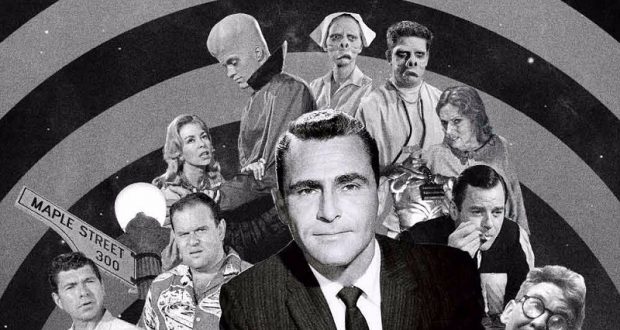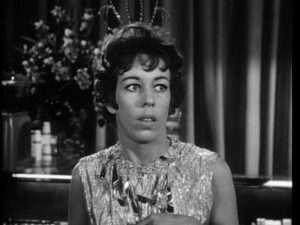By Sal Maccarone
FROM THE EDITOR: Sal Maccarone will be taking a brief hiatus from article writing at SNO. In his absence, he has asked us to republish some of his more popular articles from the past. This week: Rod Serling. Enjoy!
Originally published April 17, 2021.
On August 25, 1934 Philo Farnsworth (1906-1971) held the first public viewing of his all electric television in Philadelphia, Pennsylvania. While he was not the only inventor working on this far-out concept, he was the first and only one to offer a complete system for both sending and receiving live images. It would be another seven years until the official start of commercial television would enter the American conscious, (July 1, 1941). Six months after TV’s introduction, at the start of WWII, there were still only about five thousand television sets in the United States, and most of those were confiscated for the allied effort. After the war ended in 1945 the television industry would finally have a chance to grow.
During the early days of television, programming was limited to sporting events, public announcements and pre-recorded newsreels. TV’s dramatic side began to unfold in 1948 with the airing of the first filmed for television series which was called, “Public Prosecutor” (done in 16mm film). After that show debuted a new breed of writer began to emerge; the television playwright. Programs like “Playhouse 90”, (CBS 1956-1960), would broadcast their dramatic plays live to millions of people. This format left absolutely no room for error, and consequently was very short-lived. For that very brief period in television history, writers, and actors were at their very best. Soon there would be another brief period when TV writers would attempt to deal with issues of morality, and social relevance.
Known as Television’s “angry young man,” Rodman Edward Serling (1924-1975) would help to shape television history. As a writer for radio, his transition to television was a natural. Always challenging executives and sponsors alike, he pushed himself and everyone else hard toward production with meaningful content. Each of his early “Playhouse 90” stories won the Emmy for best teleplay writer. He would go on to win three more during his career. His story about a washed up boxer titled, “Requiem for a Heavyweight”, is said to have legitimized television. He also changed the way that writers and sponsors would interact, once being quoted as asking a sponsor, “How can I produce good drama when every fifteen minutes I am interrupted by dancing rabbits selling toilet paper?” That leaves one to wonder what he would say now that TV commercials occur every three minutes.
One day while walking through an empty back lot at Paramount Studios Rod had an eerie thought. He wondered what it would be like to be the only person on earth! This thought eventually evolved into a pilot for a TV anthology series that he called, “The Twilight Zone”, (first broadcast on October 2, 1959). With this weekly program he was finally able to deal with a wide scope of social issues which included: politics, racial relations, and war. By presenting his work as paranormal fiction, his Twilight Zone series was able to escape controversy.
Many superb actors and actresses owe their careers to Rod Serling’s honest and dramatic style of writing. For instance, Robert Redford had parts on Playhouse 90, and then the Twilight Zone long before any of his academy award performances in the movies. Elizabeth Montgomery also stared in an early episode of Twilight Zone before catapulting to her own TV series, “Bewitched”. William Shatner, Robert Duvall, Jack Klugman, Burt Reynolds, Carol Burnett and Peter Falk are just a few of the others that began their TV careers on the Twilight Zone. The world continues to realize long lasting effects brought on by the dramatic art of Rod Serling!
Sal Maccarone









